PIGEONS
The terms Dove and Pigeon are interchangeable.
FERAL PIGEONS, FERAL ROCK DOVES, STOCK PIGEONS & RACING PIGEONS
The differences between these is confusing as they look extremely similar. Feral pigeons as the term suggests, have descended from the others and can variously share certain features.
We all know the pigeons that frequent our towns and cities. These are generally descendants of domestically bred pigeons that have gone feral. A keen breeder would be quite peeved at the thought that his carefully bred birds were being compared to their errant cousins. Pigeons have been bred for sport such as racing or shooting and in the past were kept in doocots as a ready source of food. Doocots (lofts) were found on most estates, their forms vary greatly and were often quite innovative. You can see one in the grounds of Strathleven House. index.asp?pageid=716575
STOCK DOVES : Often compared to rock doves and feral pigeons due to their size and plumage, stock doves are easily recognizable. They have mostly blue and grey bodies and a unique bottle green band located on the back of their necks. When they are flying people can notice the black edges located on their wings. They can be found all over the UK except in some areas of Ireland and northern Scotland.
FERAL PIGEONS DESCENDED FROM ROCK DOVES : Although originating as a wild species, as discussed below, these were once domesticated for food and have since escaped and merged with other species . These have a wide range of shades, but darker colours usually dominate their feathers. They are known as persistent pests in buildings in urban areas once their number grows.
Pigeon fanciers formed clubs and arranged racing events. These could be very competitive. Grants were even granted to ensure the sport survived in West Dunbartonshire. But these days, there is much less sign of their heyday. The sport has become texhnologically astute using a range of digital assets.
To others though they are a terrible pest. They can breed profusely in buildings that are derelict or have ledges and their guano (bird poo) that can become a health hazard to humans. it is all a matter of balance of numbers. While the council are not obliged to control them, they do try to disuade people from feeding them inem in public places.
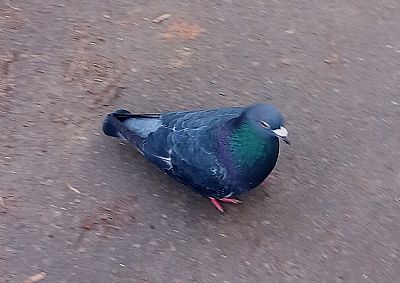
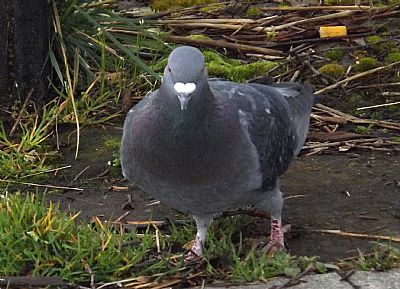
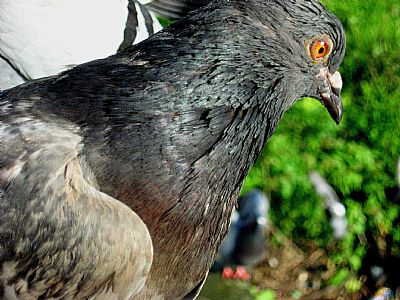
Note the orange eye surround. (Different to the wood pigeon which has white).
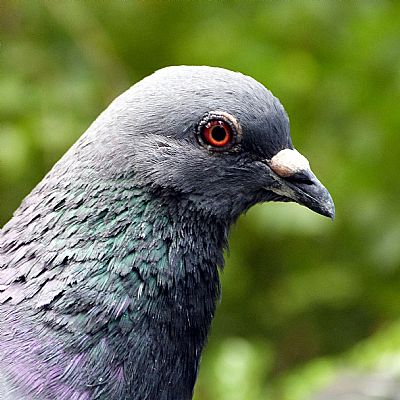
Here's looking at YOU!
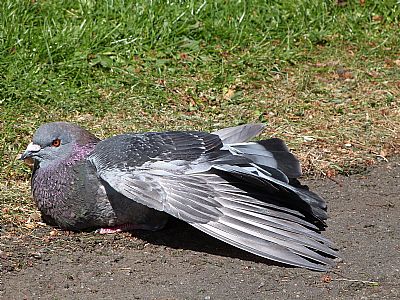
A really warm morning in May.
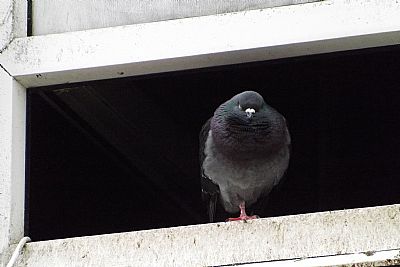
Looking out on Mitchell Way one summer evening (2023) and wondering when / if its accommoation block will eventually be demolished.
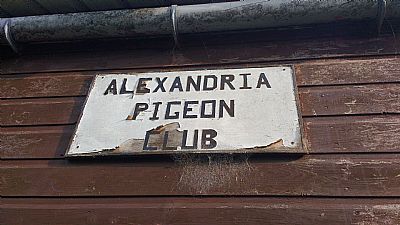
A sign in Alexander Street in Alexandria.
So now that we have considered the domesticated and feral pigeons, let's now look at those wild species. These include wood pigeons, rock pigeons, turtle doves and collared doves.
ROCK DOVE : Columba livia
If this looks very familiar, it is because it is the ancestor of all domesticated pigeons and therefore all feral species, of which there are about a thousand, and they naturally share some features. But just sometimes we may come across what may be a pure (or lamost pure) example of the rock dove.
These wild birds are almost solely found along the west coast of Scotland and to the north. It is therefore quite possible that what is seen in West Dunbartonshire is in fact a proper rock dove.
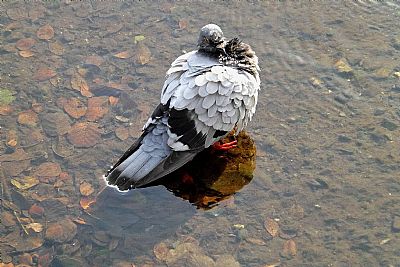
It is a lovely warm September morning and a rock dove takes a bath on the slipway at the Leven barrage. A thorough preening with the feathers all fluffed up completes the beauty ritual.
WOOD PIGEON : Columba palumbus
This is the most commonly found pigeon species in this country and it is also the largest. it can be identified through its majority grey colouring with white neck patches and white patches on the wings which can be seen clearly during flight.
Their cooing is a familiar sound in our woodland areas and parks as is the loud flapping sound when they fly off. They can be found alone or in small groups, but can be very impressive in very large groups when seen in farm fields.
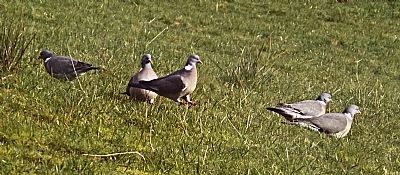
Some wood pigeons in a field above Renton. Did you notice that the one in the centre is taking a big hop across the grass tufts?
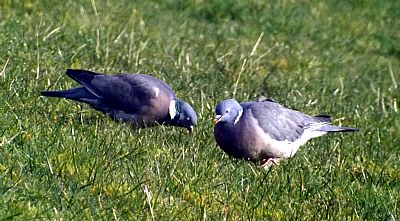
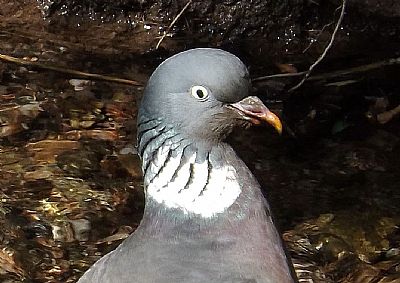
This rather startled looking pigeon looks healthy - except for its beak, the lower section of which is skew, a sign of past illness. Note the white eye surrounds. (Photo taken near Cardross).
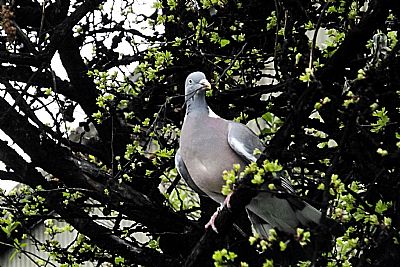
A wood pigeon collecting nesting material in spring - mid April.
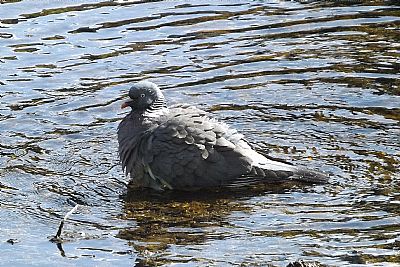
Mid May and the weather is at last rather warm. A wood pigeon takes a cooling and unhurried soak in the shallows of the River Leven.
BRITISH TRUST FOR ORNITHOLOGY : https://www.bto.org/understanding-birds/birdfacts/rock-dove
MERLIN ENVIRONMENTAL : https://merlinenvironmental.co.uk/blog/pests/birds/can-you-shoot-pigeons-in-the-uk/
PEST CONTROL SERVICES : https://www.pest-control-services.org.uk/birds/pigeons/west-dunbartonshire/
PIGEONPEDIA: All about pigeons including their beak forms and health issues https://pigeonpedia.com/
RSPB : https://www.rspb.org.uk/birds-and-wildlife/wildlife-guides/bird-a-z/woodpigeon/ and https://www.rspb.org.uk/birds-and-wildlife/wildlife-guides/bird-a-z/rock-dove/
TOTAL BIRD CONTROL : https://www.totalbirdcontrol.co.uk/bird-control-news/latest-news/different-types-of-pigeons-in-the-uk/
WEST OF SCOTLAND CHAMPIONSHIP CLUB : https://www.pigeonsonline.co.uk/about-us/
WIKIPEDIA : https://en.wikipedia.org/wiki/Rock_dove
WILDLIFE TRUSTS : https://www.wildlifetrusts.org/wildlife-explorer/birds/pigeons-and-doves/rock-dove

